The Laurel Highlands region is the whole package when it comes to planning a trip to satisfy your hunger for nature, art, and design.
The rolling hills of Southwestern Pennsylvania are the backdrop and enclave for several houses designed by the celebrated American architect Frank Lloyd Wright. His work exemplifies the fusion of architecture and the outdoors.
Since I learned for the first time about Wright’s work in design school I dreamed of setting foot in his waterfall house. Walking through the spaces shaped by his philosophy of integrating the houses with their environment, blurring the distinction between inside and outside, and playing with the sense of scale, was high up on my bucket list.
You can see his trademark in every single little detail of the houses; from the custom lamps to the built-in furniture and his famous chairs.
Within a short distance of each other, surrounded by mountains, sculpture gardens, and scenic trails, you’ll find four houses designed by Frank Lloyd Wright and two designed by one of his disciples at the Taliesin Fellowship.
It’s possible to visit all the houses on a day trip from Pittsburgh if you leave early morning, but if you want to take your time and do the hikes I recommend staying overnight (even better, a couple of days) and include a visit to nearby parks, like the Ohiopyle State Park.
Disclosure: This post contains some affiliate links. If you make a purchase through those links I will earn a commission at no additional cost to you (zero, nada). To check the full disclaimer, click here.
These are the sites where you can see the genius of Frank Lloyd Wright at work in the Laurel Highlands, Pennsylvania.

Table of Contents
Fallingwater – The Waterfall House
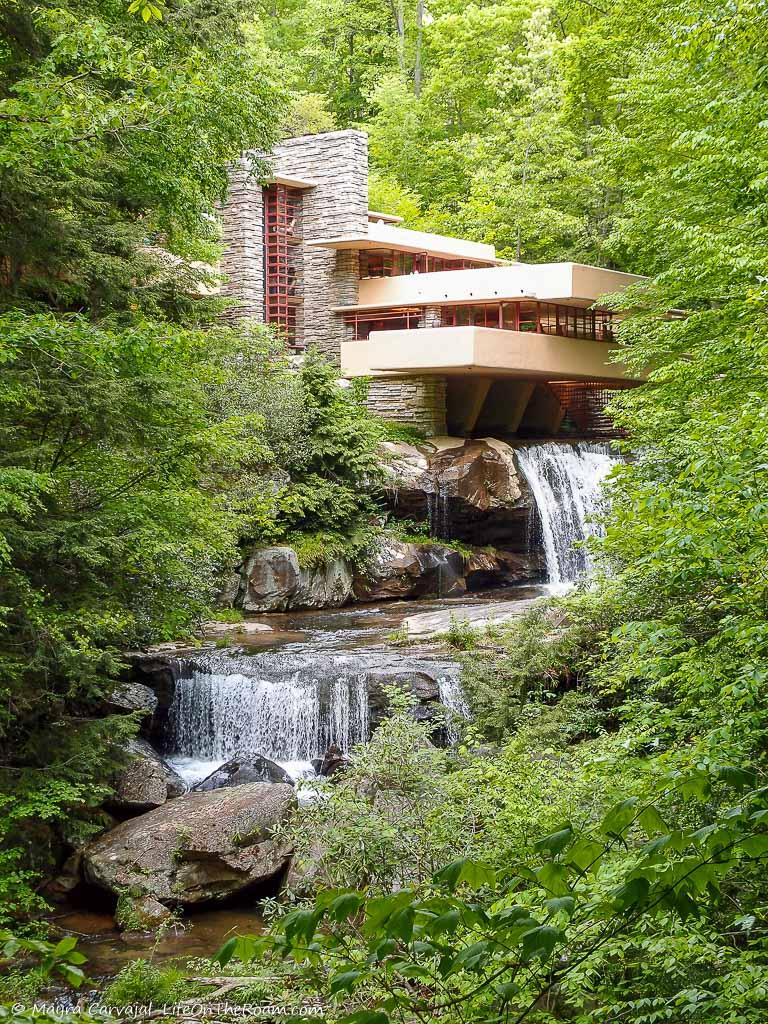
A picture of Fallingwater, a house commissioned by the Kaufmann family as a summer retreat in Bear Run, introduced me to the mind-blowing work of Frank Lloyd Wright.
This magnificent architectural jewel, a UNESCO World Heritage Site, was built in 1935. Do you agree that Wright was definitely ahead of his time?
Fallingwater is a masterpiece where you see how nature influenced the design based on the site topography, the selection of natural materials, the sense of proportion, and how it all affects the occupants.
He ditched the conventional approach of “let’s build a house with a view of the waterfall”, proposing instead the idea of “living with the waterfall”.
Fallingwater emerges from the mountain, breaking through the dense vegetation that frames it. The rocks licked by the powerful stream seem to rise and form vertical pillars that anchor the horizontal planes hovering above the waterfall.
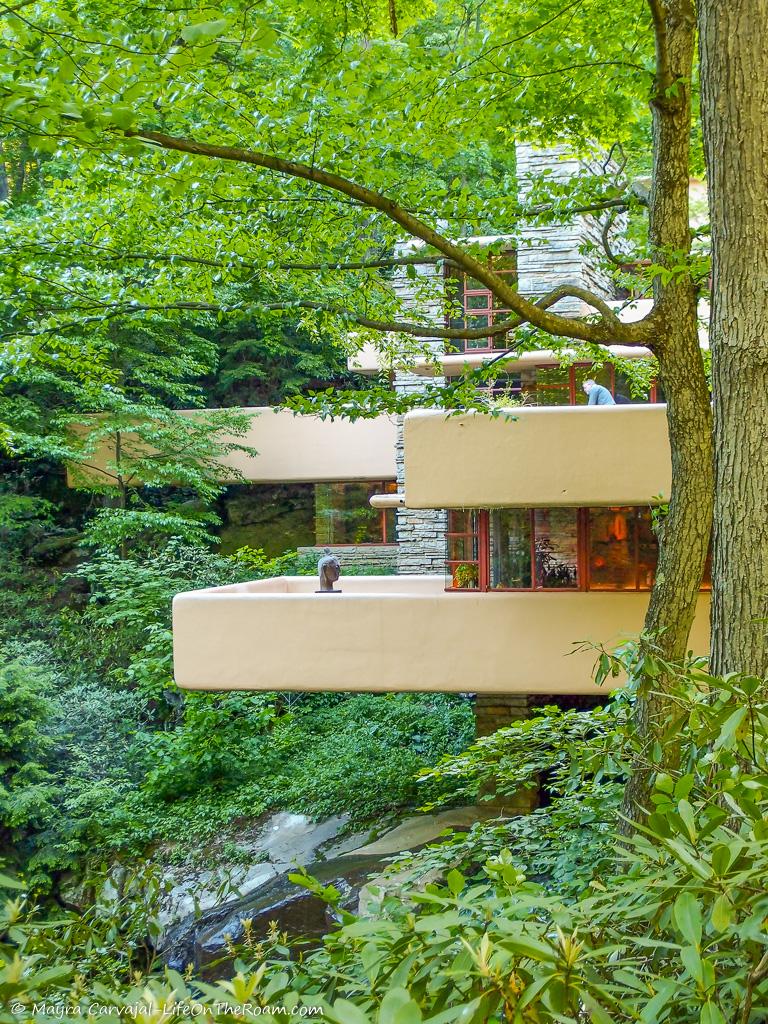
The endless row of glass enclosures that connects you to the outside also creates the illusion that the entire cantilevered terraces are floating, as if a magician decided to trade cards for structural elements.
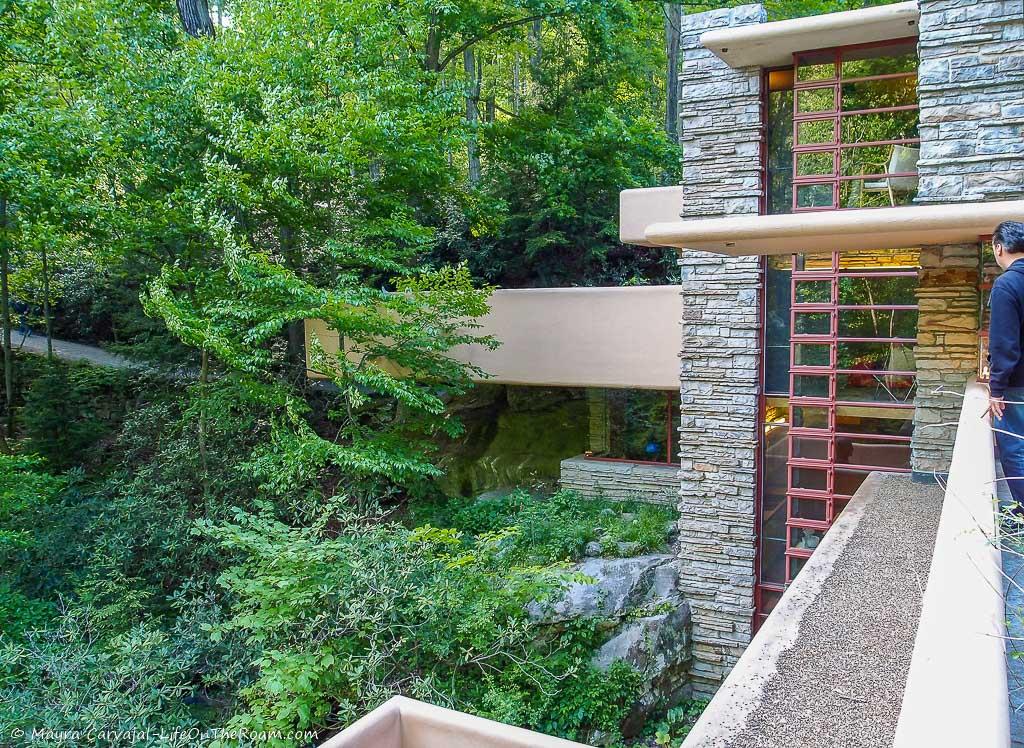
Through the windows you see the sandstone cladding the exterior and making its way inside the house on walls and floors, drawing patterns with the wood shelves and cabinets.
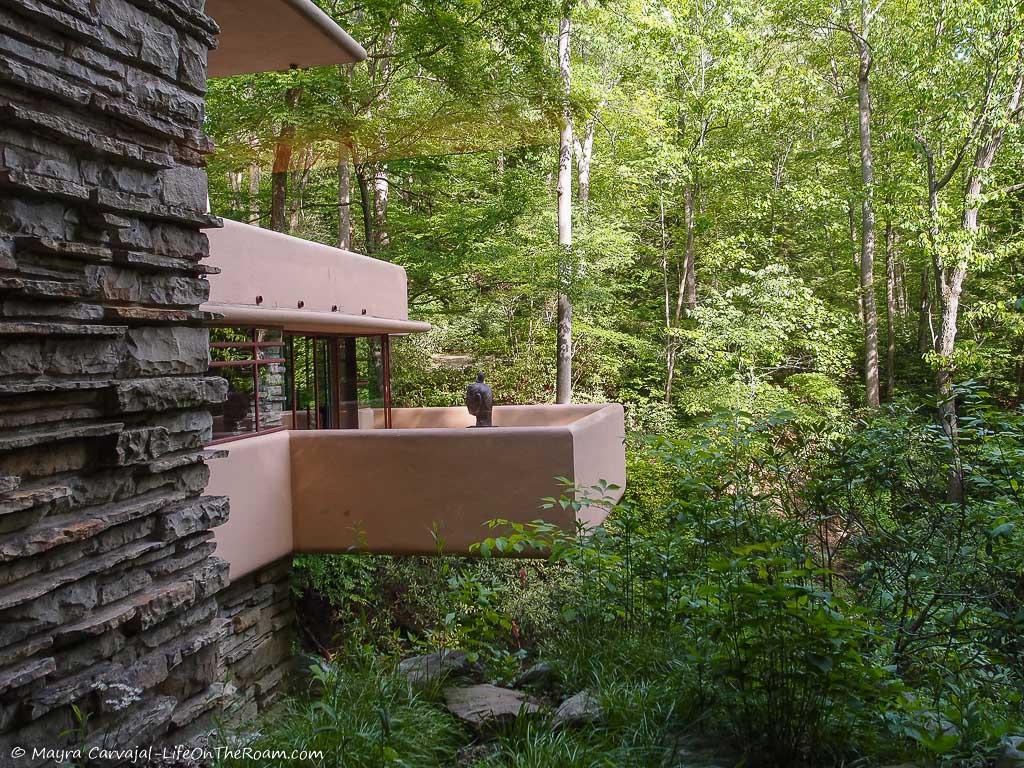
We took the In-Depth tour, which costs more than the regular guided house tours (US$85 vs.US$32), but it’s totally worth it. It lasts 1.5 hours, the guide goes into greater detail, groups are smaller, it includes a visit to the guest house above, and interior photography is permitted (for personal use only).
The house can very well be an art gallery, with furniture classics and the Kaufmann’s art collection on display: Tiffany lamps, Frank Lloyd Wrights’ Barrel chairs, BKF chairs, Audubon and Picasso prints, Japanese prints, sculptures, and works by Diego Rivera, who was a guest, as was Albert Einstein.
I learned some interesting stories about Wright and the house:
-The land was used to run a summer camp for the Kaufmann’s department store employees. After the Great Depression hit, people didn’t have money to travel around. The family then decided to build their private summer retreat.
-Wright liked to include built-in furniture in his plans so the clients wouldn’t be changing things around after moving in, messing up his design (control issues, anyone?). At Fallingwater, you can see all the original furniture, accessories, and art.
-It has been said that Mrs. Kaufmann started her day early morning by taking the stairs from the living room down into the stream to plunge into the cold water.
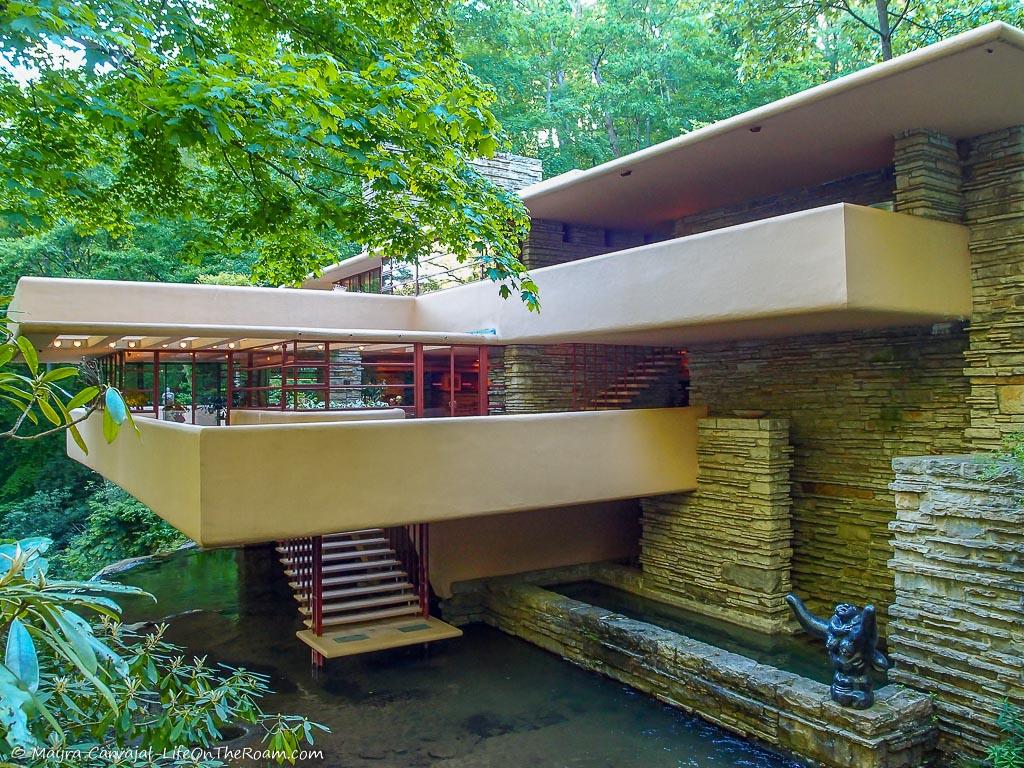
-The concrete cascading slab covering the walkway between the main house and the guest house was poured in one day; with no seams.
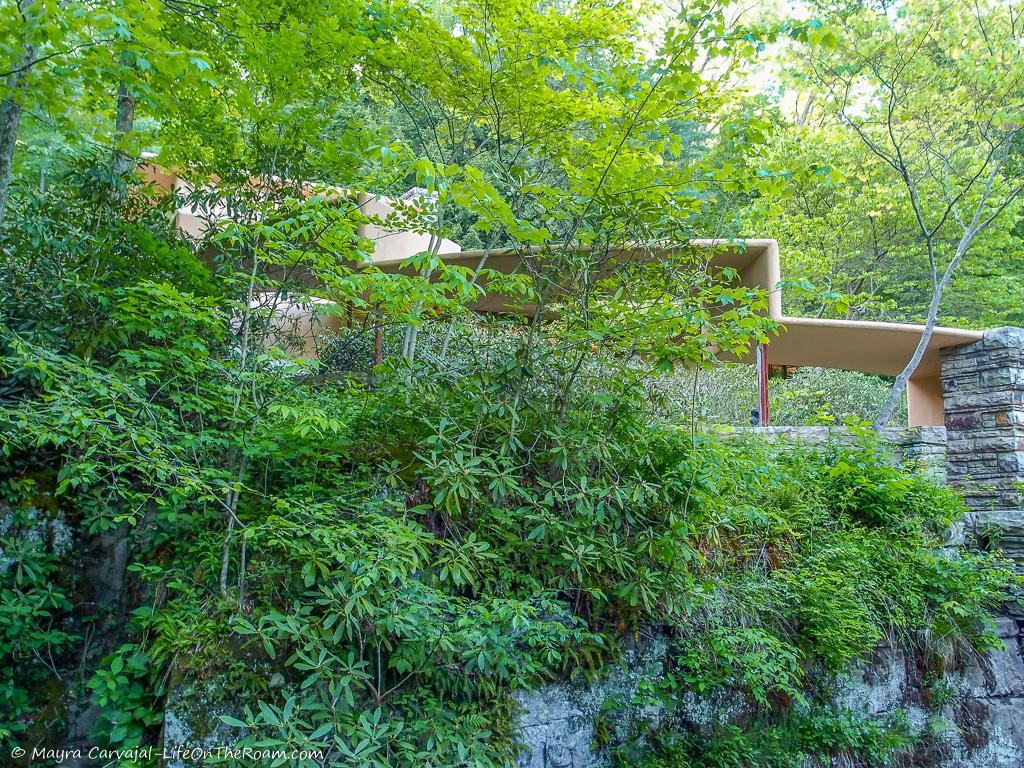
-During construction, engineers hired by the Kaufmanns recommended additional support for the first floor. Wright said Nah! .The owner and the architect argued about this back and forth. The steel went in despite Wright’s refusal. Further studies revealed that without it, the house would have collapsed. However, years later, the house still required extensive work to add structural reinforcement. It also had mold issues due to its proximity to the water and requires constant maintenance.
Today, we can admire this architectural gem – a National Historic Landmark- after the Kaufmann family donated the house, its contents, and surrounding property to the Western Pennsylvania Conservancy in 1963.
Allot enough time during your visit to hike the trails inside the property and the nearby Bear Run Nature Reserve, easily accessible from Fallingwater (read more below).
To have access to the interiors you must book a tour in advance (either online or by phone).
If you only want to see the house from the outside and access the trails (I wouldn’t miss the interior tour, though) you can get the grounds pass for US$ 15 (call to check availability during high season).
At the visitor centre on site you can learn more about Frank Lloyd Wright, Fallingwater and Organic Architecture, and visit the exhibition space and the café.
Fallingwater
1491 Mill Run Road, Mill Run, PA 15464; 1.724.329.8501. Check the website for all available tours and for driving directions to avoid getting lost (it’s complicated).
Hiking Trails at Fallingwater
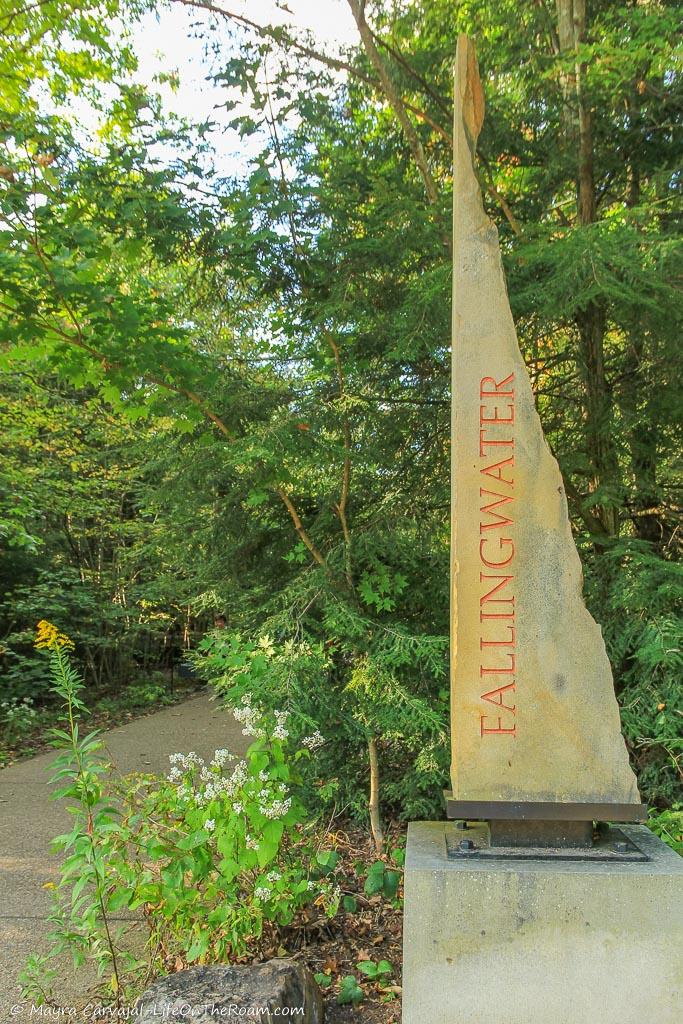
With a location as lush as the Bear Run Nature Reserve forest, you can expect Fallingwater’s surroundings to be as scenic as they are.
The Kaufmann’s love for this land drew them to protect it from further damage caused by the lumber and mining industry and to work on restoration projects.
I made sure I had some time during my visit to explore the trails inside the property and its adjacencies.
Lower Bear Run and Nature Walk
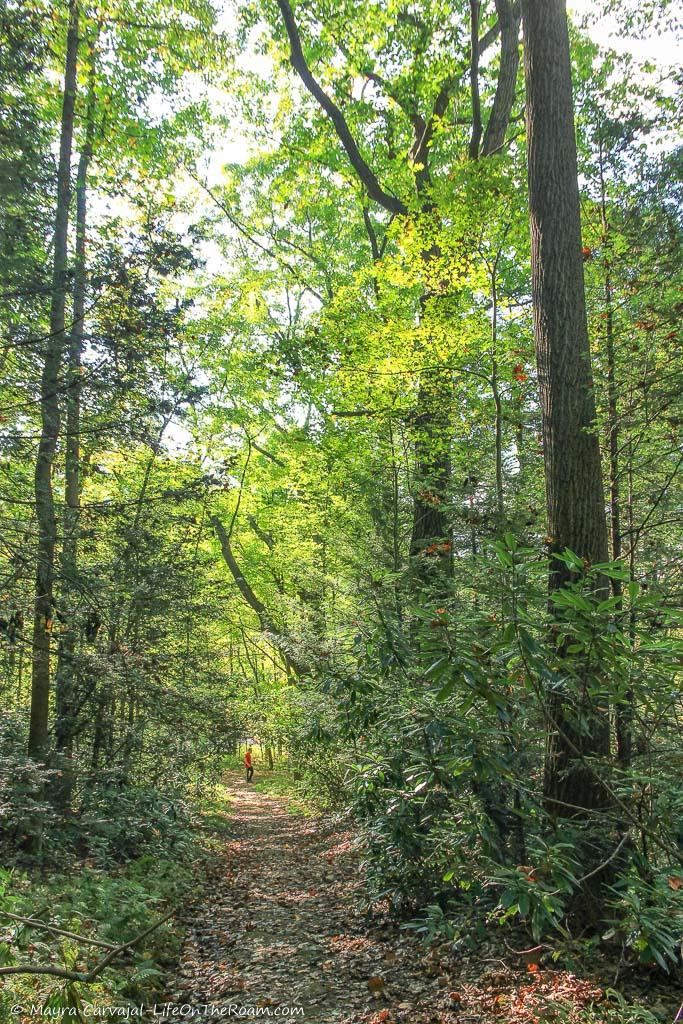
The Lower Bear Run Trail starts behind the visitor centre, to the left, and follows the Bear Run stream on its way down the mountain on a wide and rocky path shaded by mature trees, with spots from where you can see the water.
Soon after you start descending you’ll see the sign for a path to an overlook with the iconic view of the house perching over the double waterfall.
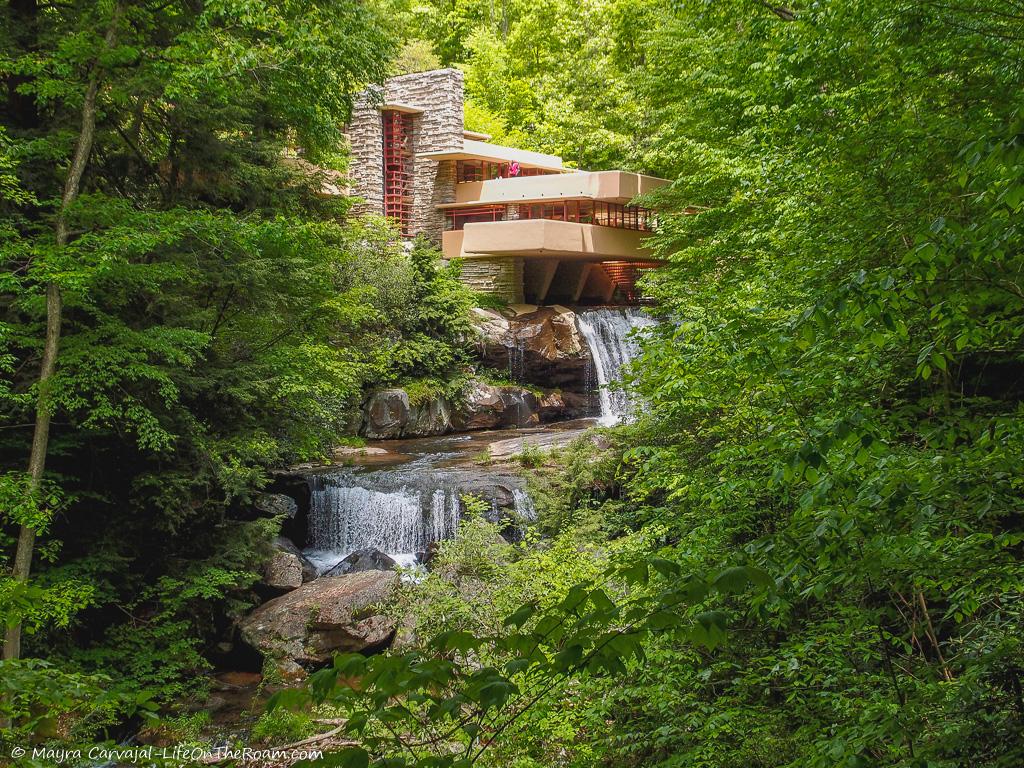
Once you’re back on the trail, you’ll get closer to the stream until you reach the end and turn around.
You can find another viewpoint and see the house from above by taking the Nature Walk, a short accessible path that starts behind the visitor centre, to the right.
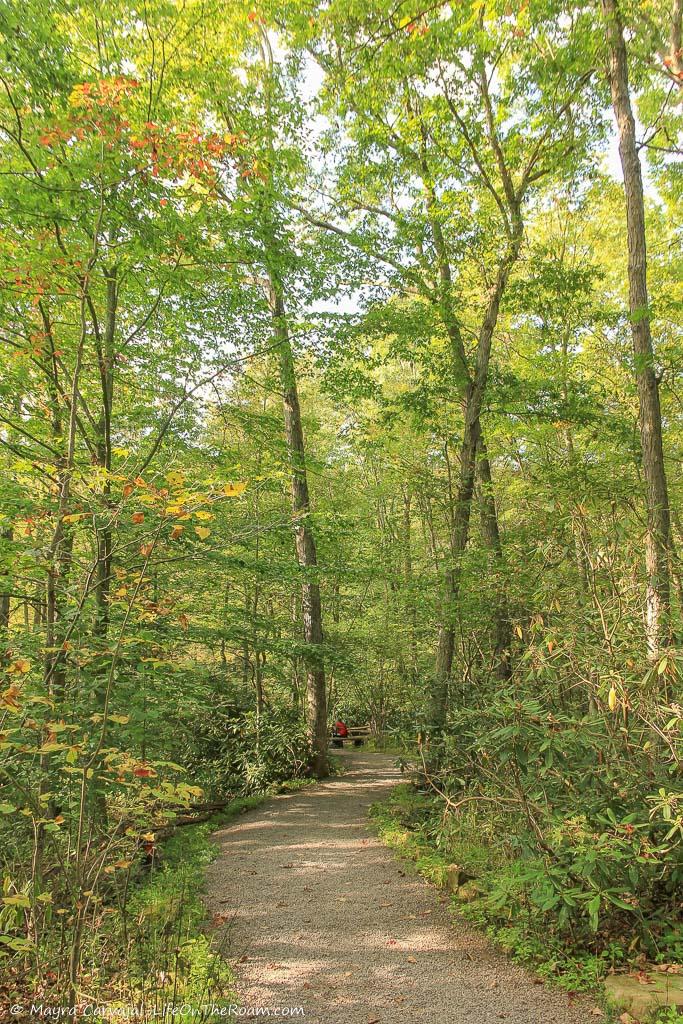
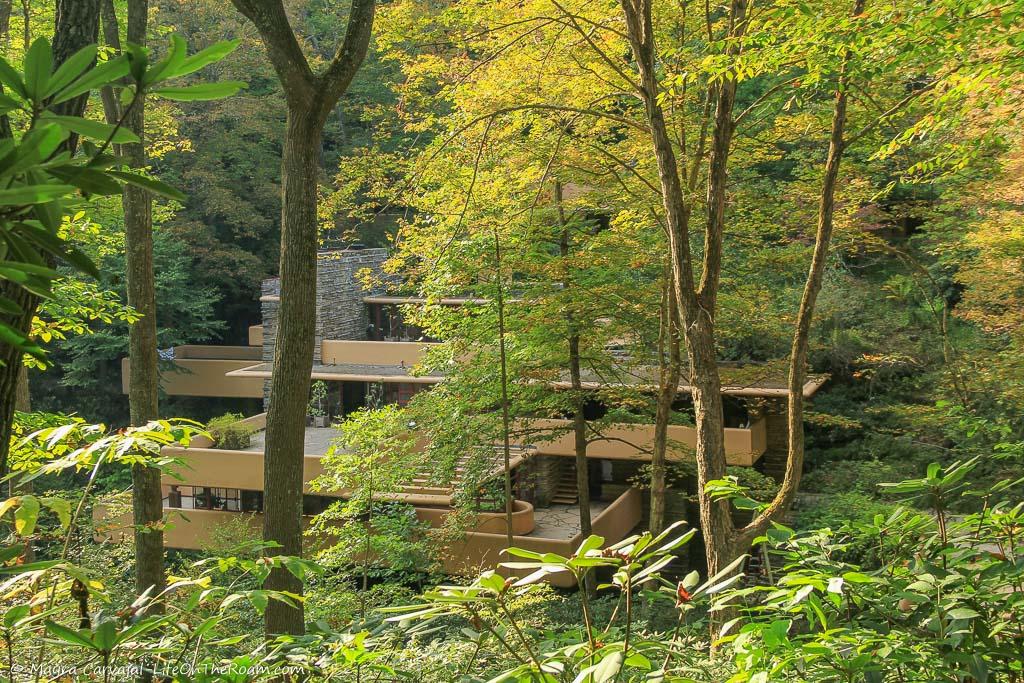
Paradise Overlook Trail
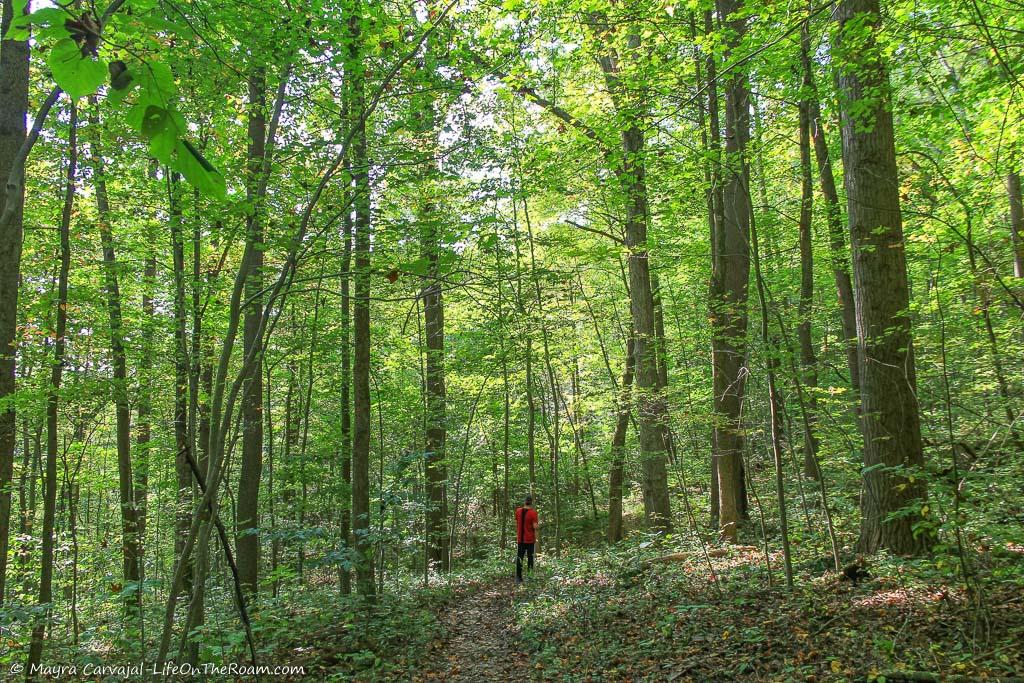
This short trail is beyond Fallingwater’s property but can be easily reached by walking behind the house and following the road leading to the employee’s parking lot.
We could connect to other trails, but with other stops in the plans and without a map of the reserve we limited the exploration to the nearby Paradise Overlook Trail, which was only half a mile.
It’s a beautiful walk in the forest, ending with a view of the Youghiogheny River. The view is nice but calling it paradise it’s a bit of a stretch.
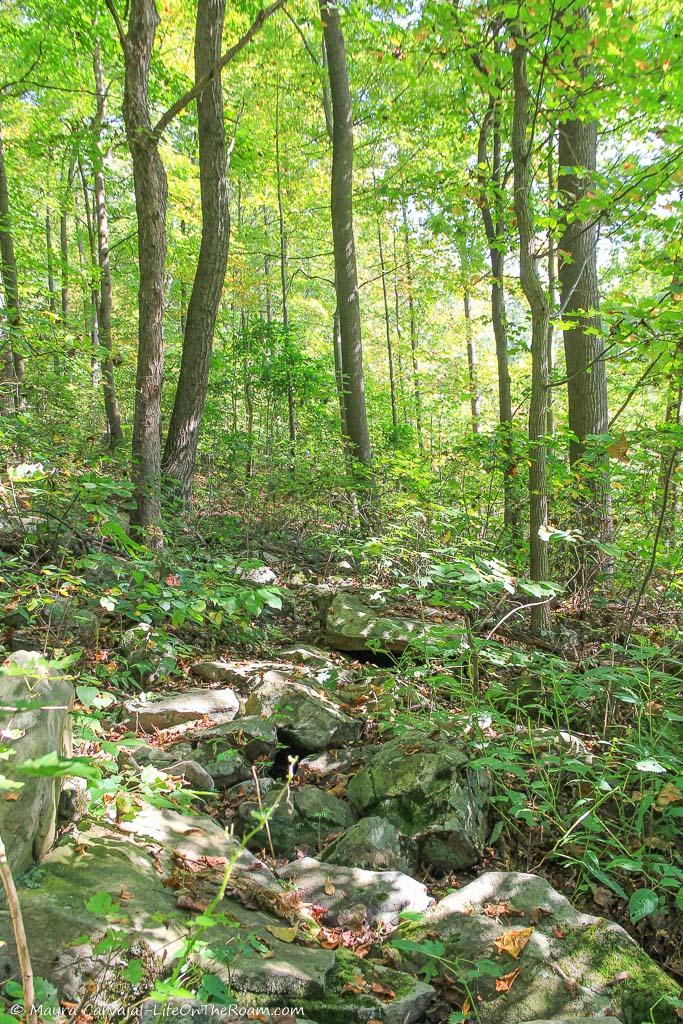
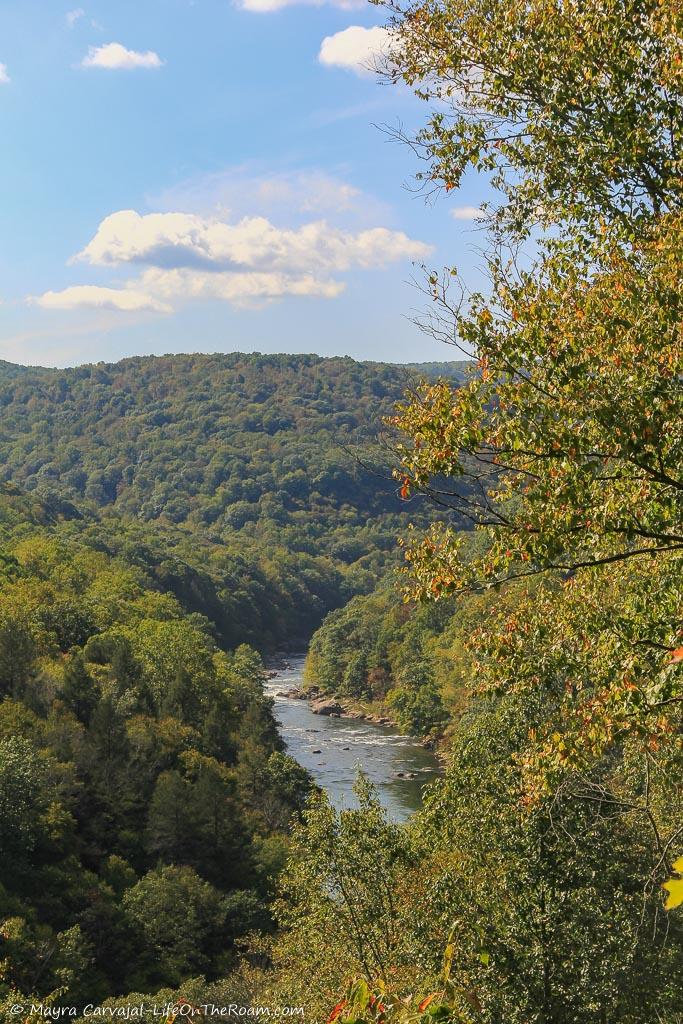
Nonetheless, the walk in the forest is amazing.
Transportation to Fallingwater: if you want to visit this gem but don’t want to drive you can book a private vehicle that can pick you up from downtown Pittsburgh and surrounding areas, including Pittsburgh International airport. Admission not included.
Book your private vehicle, with a rating of 4.9/5 based on more than 25 reviews.
Kentuck Knob: A National Historic Landmark

From the visitor centre I saw the first group of outdoor sculptures that are part of a collection of more than 30 pieces placed along the trail that connects the house with the entrance.
While waiting for the start of our tour I wandered around the cute birdhouse sculpture garden. This was only an appetizer for the multicourse feast of art and architecture that awaited us at Kentuck Knob.
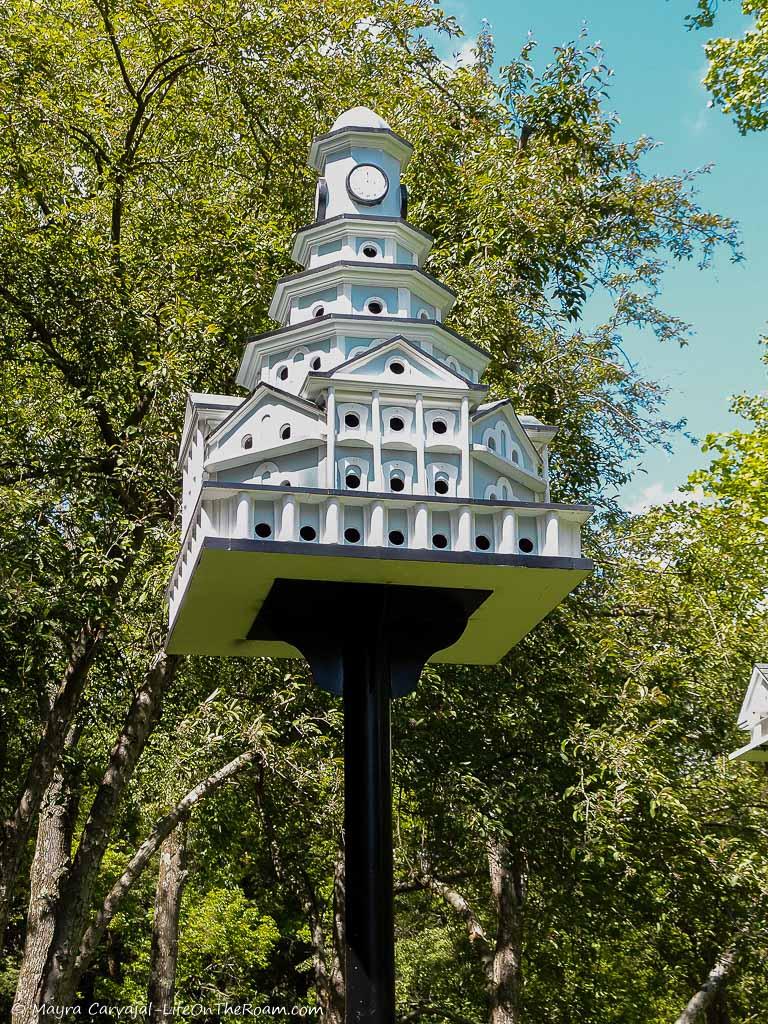
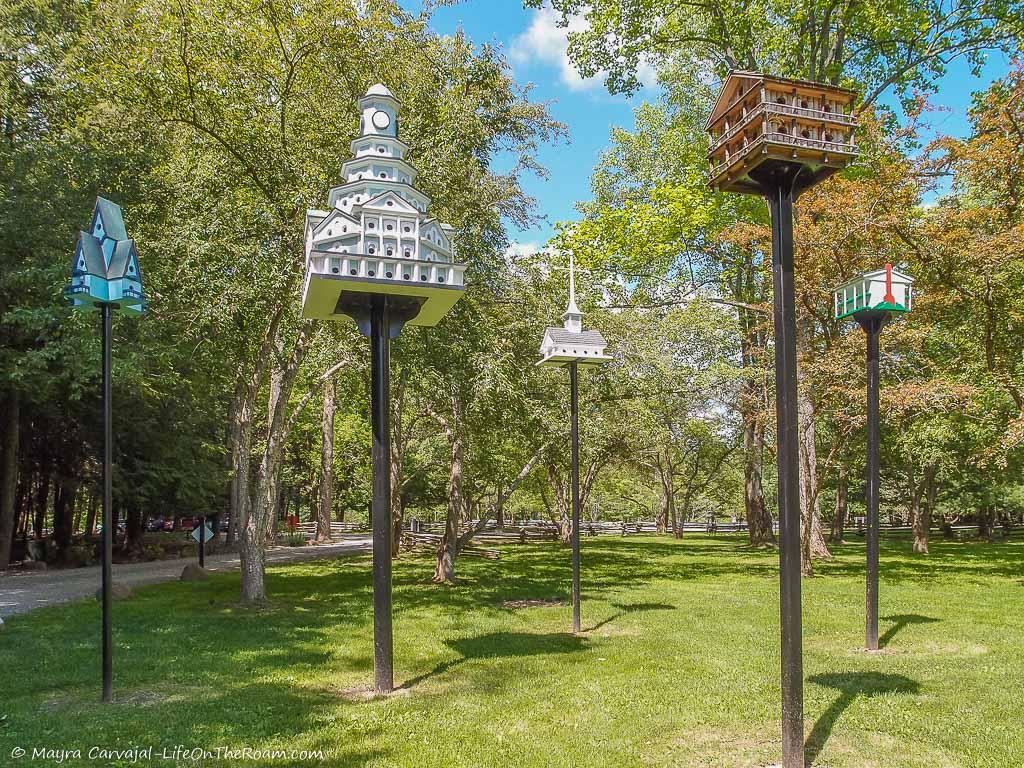
We hopped on the small bus taking the group tour uphill in the dense forest. Kentuck Knob sits near the top of the hill, surrounded by trees.
The one-story Usonian house (meaning affordable) is on the small side. It may not have the wow factor of Fallingwater (nothing can beat that), but the finishing details, the artwork in the house, the outdoor gallery, and the harmonious integration of nature and architecture strikes you with a sensation of serenity.
Kentuck Knob wouldn’t exist without Fallingwater. The Hagans saw what Frank Lloyd Wright did for their friends, the Kaufmanns, at Bear Run. They loved it so much that they approached the architect, and the rest is history.
First I encountered the famous Wright’s carports, to the left of the main entrance.
The architect was against garages. Typically they’re used to store junk and clutter; and clutter, he said, brings disease.
I immediately fell in love with the details adorning the Red Cypress clerestories sitting above the sandstone exterior.
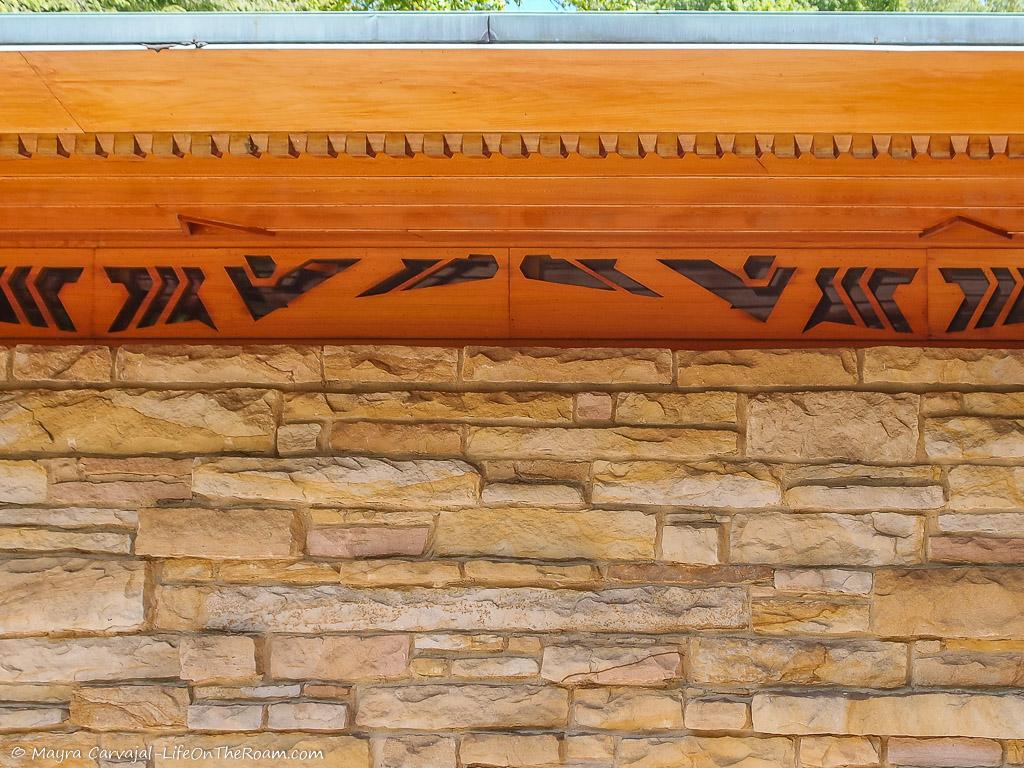
The way he played with the scale inside is evident a few steps from the entrance door. It transitions from a low ceiling in the foyer to high ceilings in the open space, in a game of compress and release that gives the area an airy feeling.
Wright was all about not making spaces larger than necessary (again, clutter). When the Hagans saw room for only two places in the dining space they asked him to make it larger. Wright asked Why? There’s only two of you. The Hagans replied Well…we would like to have guests sometimes. He then added two more seats.
There’s plenty of natural light coming through the large wooden-framed glass doors that open to the terrace, where the light penetrates the cuts in the overhang creating hexagons on the floor. You can see nothing but trees near and far.
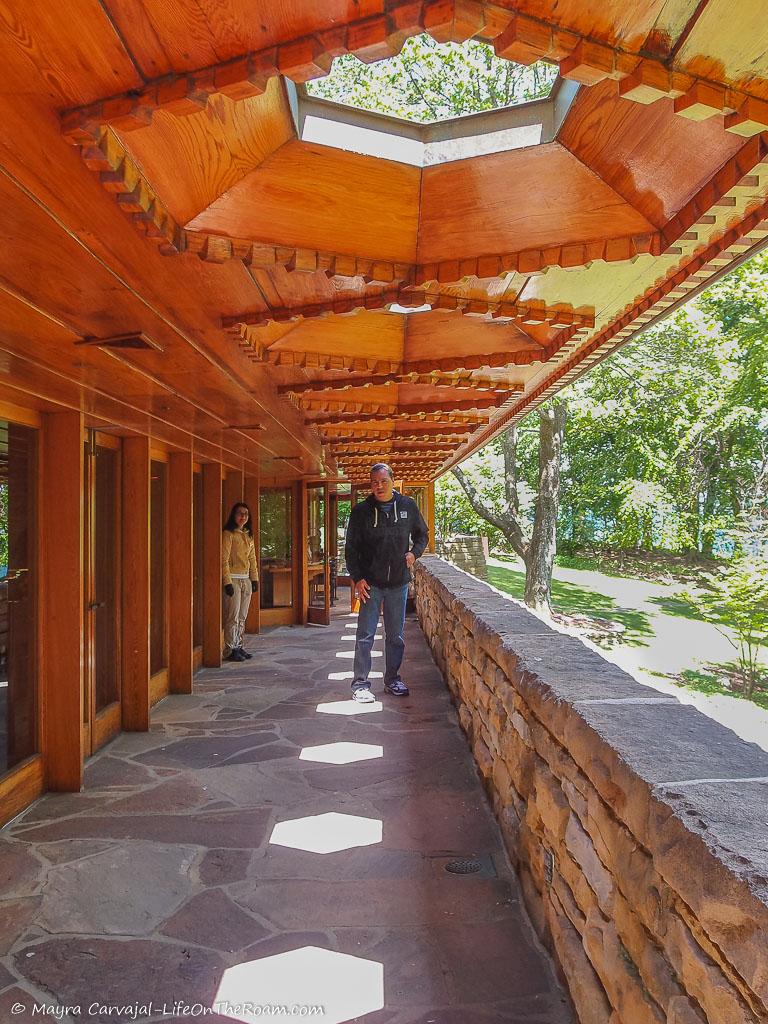
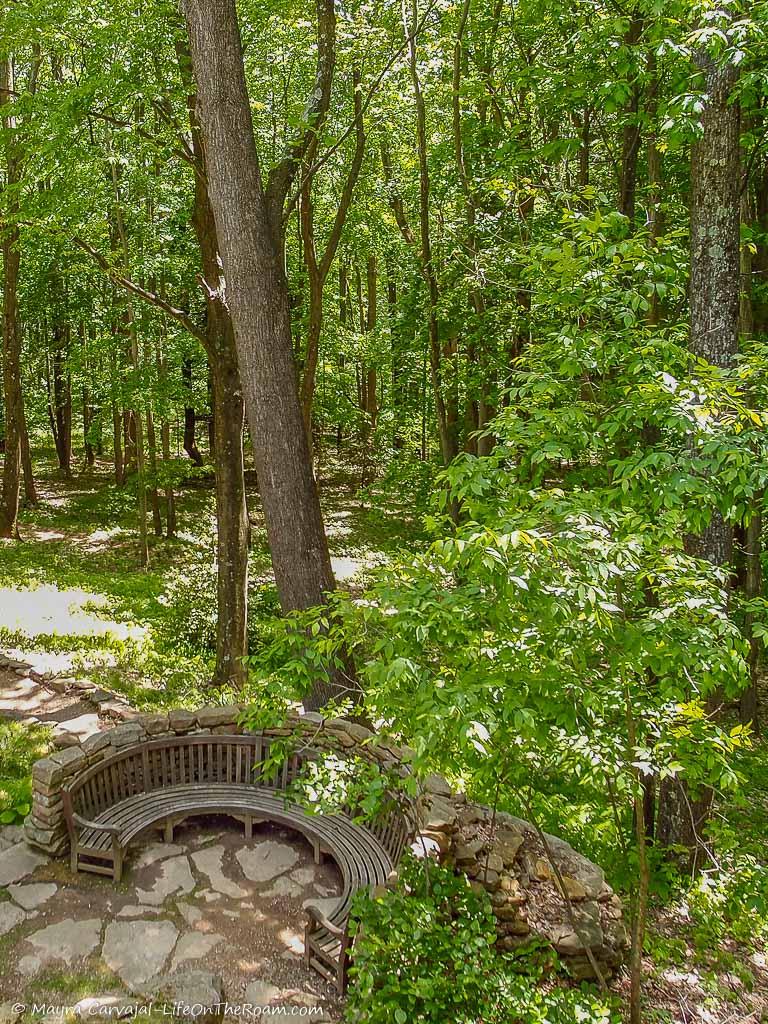
At the end of the guided house tour, we walked to the hilltop and delighted in the views of the Youghiogheny River Gorge, with hills after hills as far as your eyes can see.
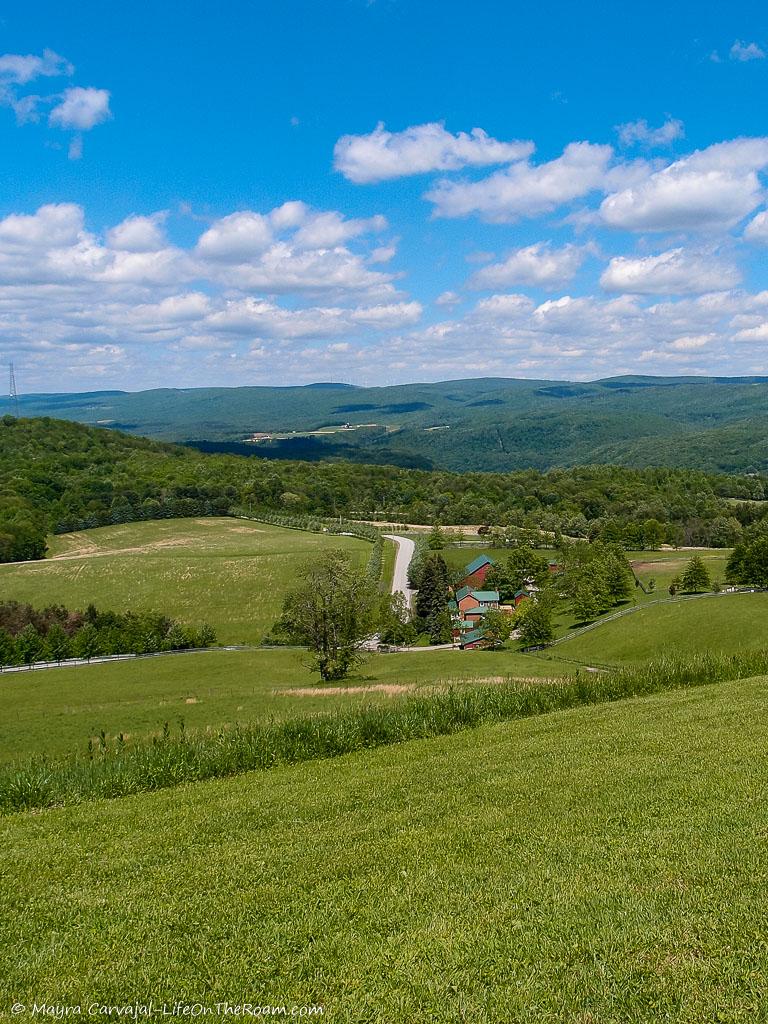
We walked down the beautiful Woodland Walking Trail back to the visitor centre while seeing a great collection of modern art sculptures acquired by the new owners, set amongst trees and fields. Don’t miss the vintage telephone booths and a section of the Berlin Wall.
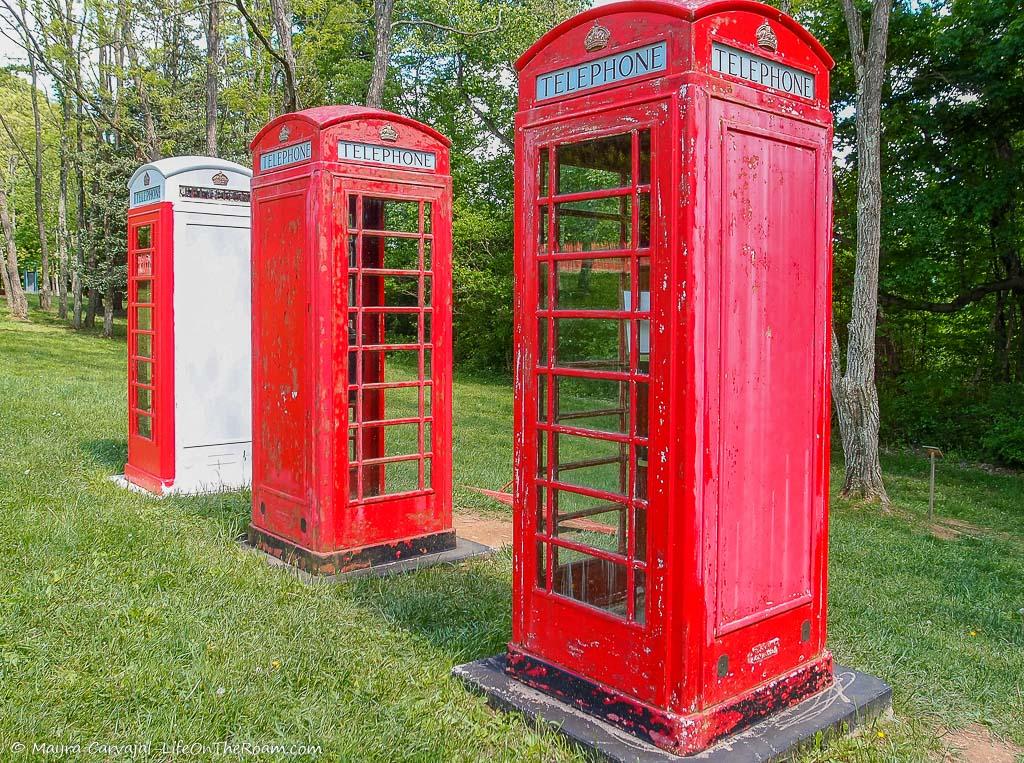
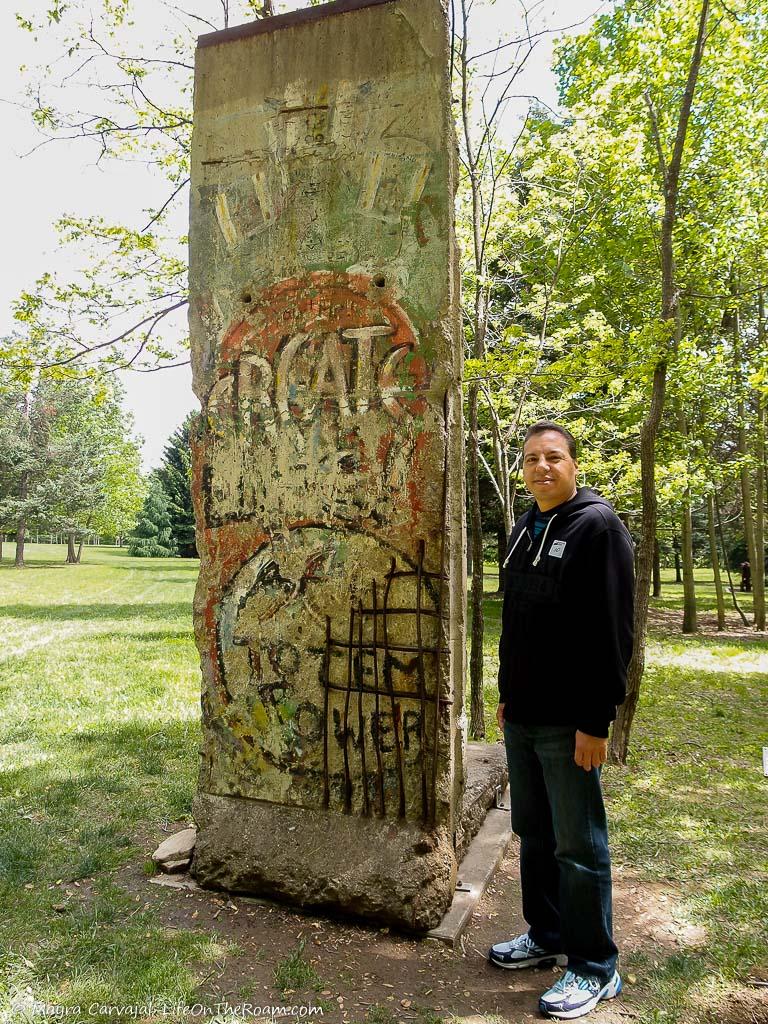
Kentuck Knob is a must-see destination if you’re looking for the perfect blend of art, architecture, and nature.
Out of the tours available, we took the Guided House Tour, which includes a tour of the interiors and access to the sculpture garden. It lasts approximately 40 minutes and costs US$28 per person.
Kentuck Knob
723 Kentuck Road, Dunbar, PA 15431; 1.724.329.1901. Tickets must be purchased in advance. You can purchase a ground pass if you only want to do the trail. No interior photography is allowed on any of the tours.
Private transportation to Fallingwater and Kentuck Knob: with pickup from the Pittsburgh area, including comprehensive insights of the two architectural masterpieces. Admission not included.
Book your private transportation, with a rating of 4.9/5 based on more than 15 reviews.
The Polymath Park: Under the Frank Lloyd Wright’s Spell
Acres and acres of woodland, mature trees, and mountain vistas – originally conceived as a residential development- are now dedicated to preserving Frank Lloyd Wright’s work and spreading the word about the Usonian concept: affordable housing for Americans.
Polymath Park is a picture-perfect background to see how Wright played with ceiling heights to create the sensation of compress and release and the orientation of the house to make the most of the views.
Large windows and skylights let the light and the use of natural materials establish a connection with the outside.
We stopped first at the terrace of Tree Tops restaurant, with a view that matched the name.
A small bus took us on a tour of three houses. One designed by Frank Lloyd Wright and two designed by Peter Berndtson, a disciple at the Taliesin Fellowship -an immersive art and architecture school in Wisconsin-. In 2019 the Mäntylä House was added to Polymath Park.
The Duncan House

At first sight, I loved the contrast of the red horizontal battens with the yellow paint. The detail carries across the sandstone exterior and into the interior, integrating outside and inside.
The house was designed by Frank Lloyd Wright as a prefab and it was built in 1957 in Illinois.
It was abandoned after Mr. Duncan’s death but, thanks to architecture-loving people, it became the subject of a relocation and reconstruction project where, piece by piece, the house was rebuilt at the park.
It has been furnished as if it would be in the mid-50s so it’s an excellent opportunity to see modern classic furniture.
The Balter House
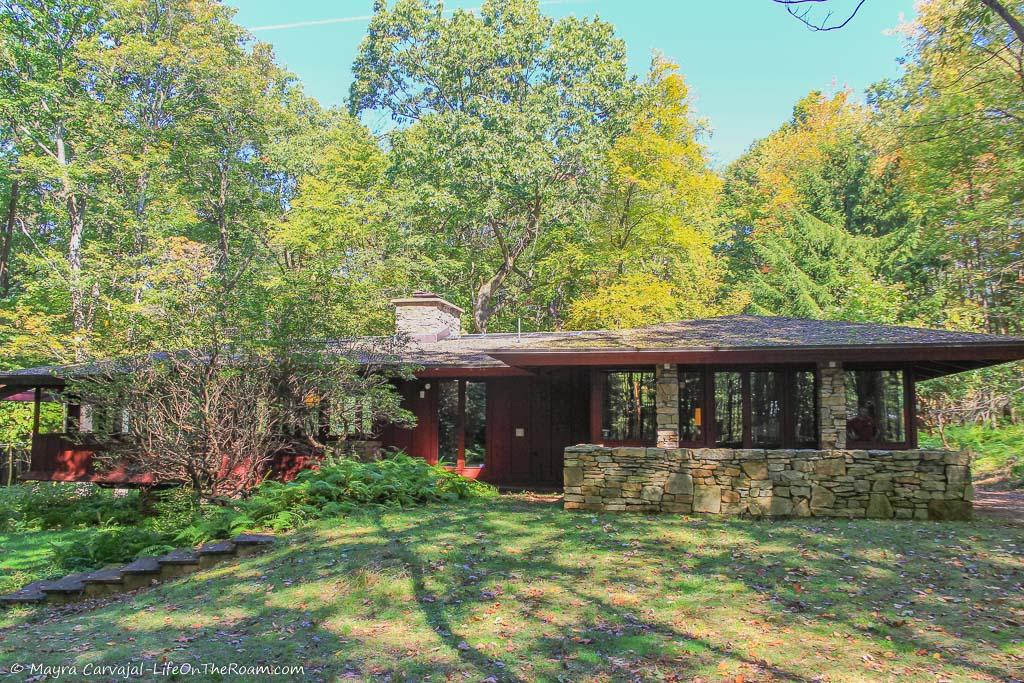
Of all three houses I visited at Polymath Park, this one was my favourite.
It wasn’t only the contrast of the sandstone with the California Redwood board and battens in the exterior and interior, but also the ethereal appearance as the house transitions to an elevated structure as if suspended above the ferns.
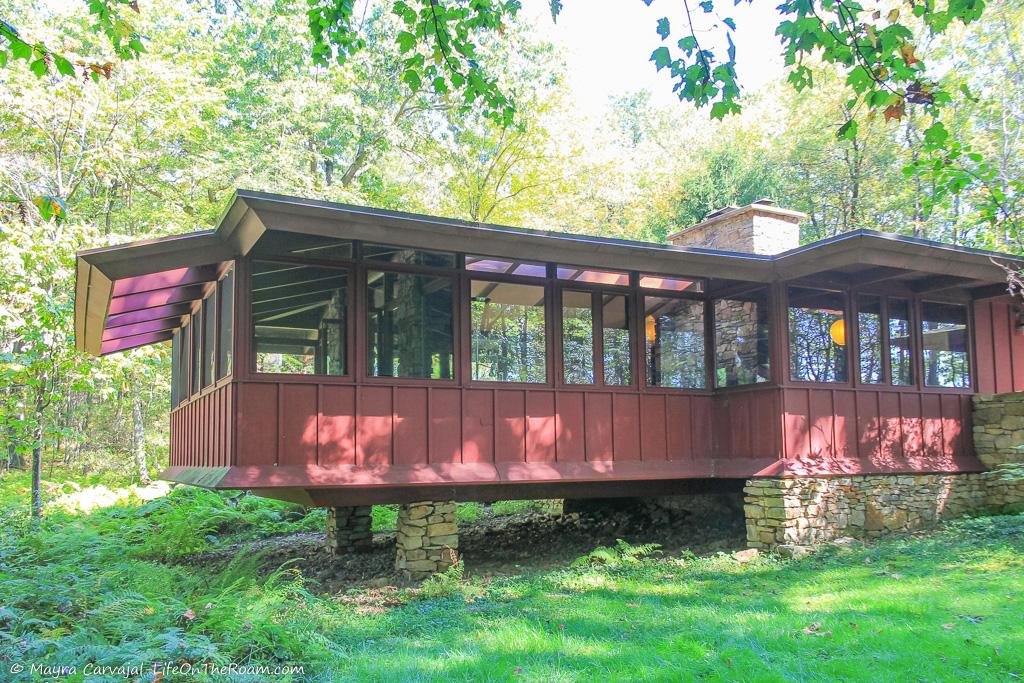
And so many windows!
Berndtson uses vertical battens and an abundance of skylights to heighten the airy sensation.
The Blum House
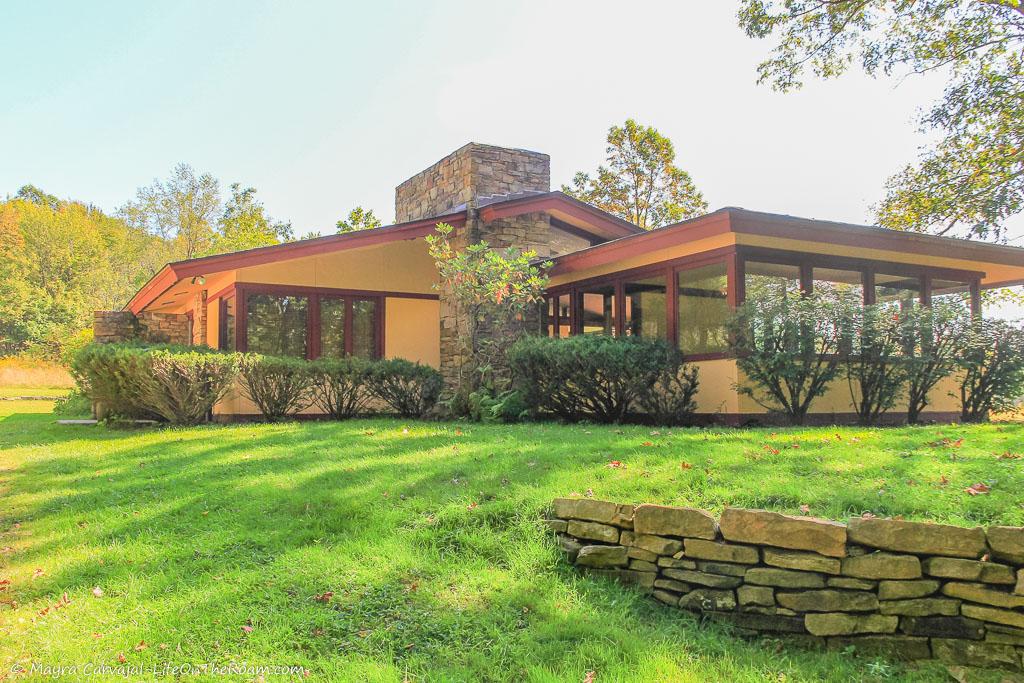
It’s all about the view, they said. And it’s certainly the case with the Blum house, overlooking the Chestnut Ridge Mountains.
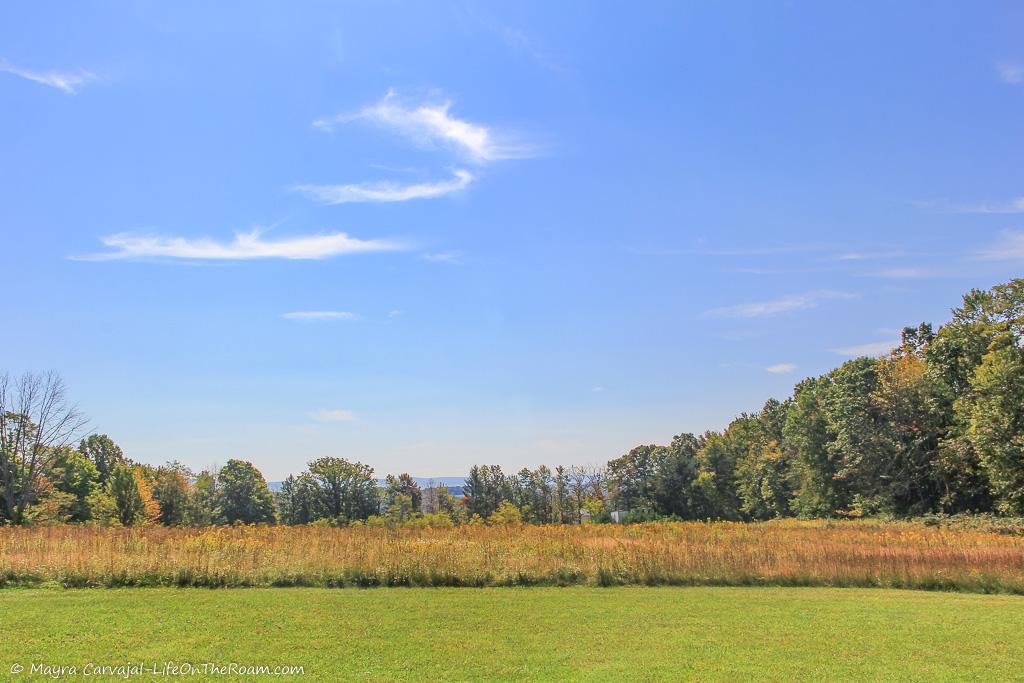
Large windows let you sink it in while skylights flood the place with natural light.
It was designed by Wright’s apprentice -Peter Berndtson- in 1963, featuring the signature Cherokee Red concrete floors and a beautiful fireplace built with stone found in Polymath Park.
What can make things better for you, Frank Lloyd Wright’s fans?
You can stay overnight, right here.
Yes, if you want a “Wright” experience, you don’t need to own one of his houses. Up to four people can share the house and enjoy this fantastic environment.
We didn’t stay overnight (it’s on my bucket list, though) as we took several day trips from Pittsburgh to visit the region, but it’s a wonderful lodging option if you want to explore other attractions in the Laurel Highlands.
The Polymath Park
187 Evergreen Lane, Acme, PA 15610; 1.877.833.7829. Check the site for all the tours available, schedule and costs.
The art collections, the architectural masterpieces of Frank Lloyd Wright, and the captivating landscape of the Laurel Highlands work together like pieces of a beautiful puzzle to provide the ultimate experience to art, design, and outdoor lovers.
YOU MAY ALSO WANT TO READ
BOOKING FLIGHTS AND ACCOMMODATIONS
Book your flight without losing your shirt
We check Momondo to find great deals to book our flights. Also, check Great Escape: it combines the listings from Expedia, Kiwi, Kayak, (and Skyscanner on the premium service) to find the best airfares.
To find a place to stay for less
Booking.com: this site combines everything under the sun. You’ll find hotels, apartments, B&B, hostels, rooms, etc., with all sort of filters to make your search a breeze.
Hotwire: the first site I check when we plan to stay at a hotel for a few nights. You can save anything from 20% to 60%. Use the search filter to find what you want and you’ll end up with three listings that match your criteria. You’ll know which one you’ll get after you book. If you can handle a little bit of uncertainty you can score big savings.
House Sitting: you take care of people’s pets and house for free while staying for free. It’s the closest thing to experiencing a place “like a local”. But it comes with responsibilities… Are you an animal lover? It may become your new way to travel.
To get travel insurance
SafetyWing: travel medical insurance that gives us peace of mind knowing that we’re covered in case of emergency. It’s convenient, affordable, and suitable for digital nomads who spend a long time outside their home country.
Check the full list of travel resources on my Resource Page for more options and savings
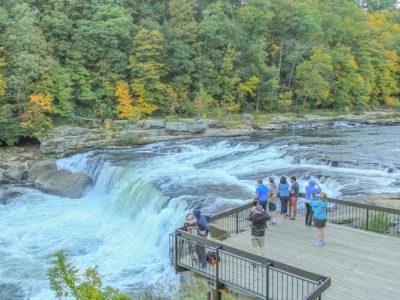
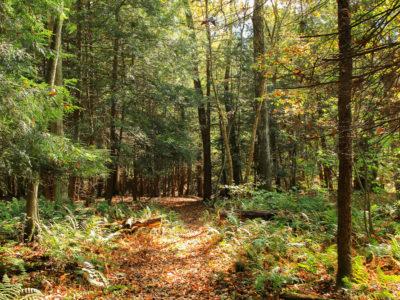

This is an awesome place to visit, and I love nature and can be a good walk around this place. thank you for sharing!
If you love nature this is a wonderful addition to your bucket list.
Wow! That is the type of environment that I love. Just by looking at the pictures, you feel so relaxed. I would like to visit the Waterfall House one day. Thanks!!!
Make sure to book one of the tours that take you inside the house. It’s 100% worth it!
Oh very cool. I want to go see these. I really want to see the waterfall one. I’m actually in Milwaukee area so we have a few Frank Lloyd Wright buildings here too. I’m a fan of his work. I actually didn’t know you had so much of his architecture there.
I have to go to Milwaukee to check out his work there.
He has so many incredible buildings but in my opinion, Fallingwater is his masterpiece. The others are close by so it’s a great opportunity to see them all and enjoy their fabulous surroundings.